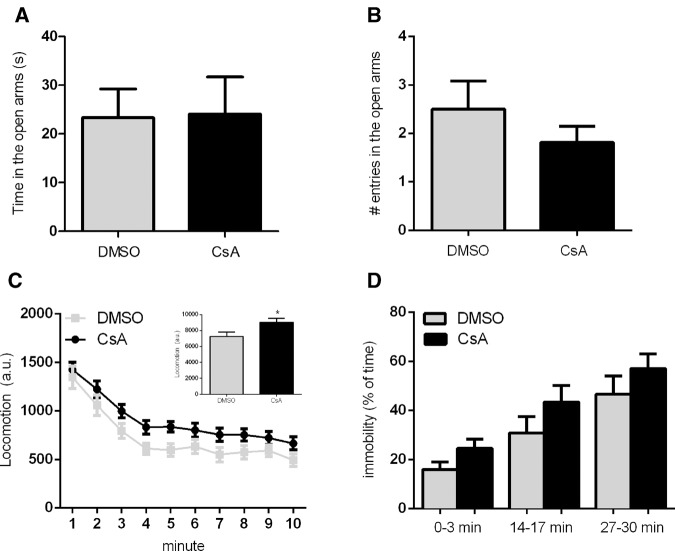Figure 6.
Effects of CsA on elevated plus maze performance, open field exploration and immobility in a novel context after fear conditioning. Mean ± SEM of (A) time (n = 12/group; Student's t test, P = 0.61) and (B) number of entries (Student's t test, P = 0.47) in the open arms of the elevated plus-maze over 5 min by animals treated with CsA (20 mg/kg) or vehicle (DMSO) 60 min before the task. (C) Locomotion (mean ± SEM) of mice during the 10-min open field exploration session, measured in arbitrary units (n = 21 (CsA), 20 (DMSO), two pooled experiments; two-way repeated-measures ANOVA, P (drug) = 0.02, P (time) < 0.0001, P (interaction) = 0.95). Inset shows mean ± SEM of the pooled locomotion in each group of animals over the whole session (Student's t test, P = 0.02); (*) P < 0.05. (D) Mean time (%) (± SEM) of time spent in immobility of fear-conditioned mice treated with CsA (20 mg/kg) or vehicle (DMSO) 60 min before a 30-min session in a novel context (different from the conditioning one). 3-min bins represent early (0–3 min), intermediate (14–17 min), and late (27–30 min) periods of this session. Both groups show an increase in immobility over time, mostly due to sleep activity, with no significant difference between groups (three pooled experiments, n = 28 (CsA), 25 (DMSO); two-way repeated-measures ANOVA; P (drug) = 0.11; P (time) < 0.0001; P (interaction) = 0.79).

